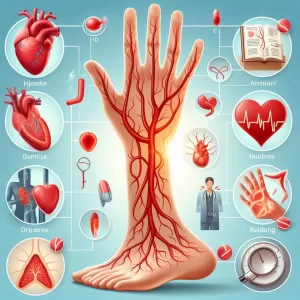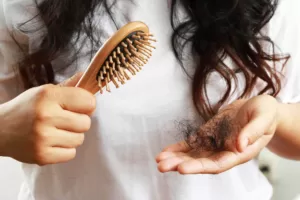What is Excision of Cyst: Overview, Benefits, and Expected Results
Définition et aperçu
Cysts are sac-like capsules, usually filled with liquid, semi-solid or gaseous material, that form within the body’s tissue. They can be microscopic but they can also grow into large sizes that have the capacity to displace internal organs. There are many types of cysts because they can result from many different causes, like genetics and infection. However, once detected through palpation and imaging systems like ultrasounds, CT and MRI scans, a doctor can recommend the best treatment plan. An excision or surgical removal of the cyst is one type of treatment procedure.
Normally cysts are generally left alone and require no treatment. However, if they grow and start to affect the normal function of the tissue or if they are malignant, their immediate removal is recommended.
There are three types of excision techniques: conventional wide excision, minimal excision and punch biopsie excision. A conventional wide excision may be considered minor surgery because it involves the complete removal of the cyst through a long cut on the affected part of the body. Meanwhile, a minimal excision is similar to a wide excision except that instead of a wide excision, the doctor only makes a very small cut, just enough to drain the cyst and remove the cyst wall. Punch biopsy excision, on the other hand, involves a laser that makes a minuscule hole drain the cyst. After a month, the cyst’s walls are removed. This type of treatment hardly leaves a scar.
Qui devrait subir et résultats attendus
Any of the abovementioned treatments all works in removing cysts. When deciding which one to perform, the doctor will take the following factors into consideration: the size of the cyst, whether or not it is easily expressed and the cosmetic impact of the resulting scar.
Conventional wide excision – This method involves the complete removal of the cyst. As the name suggests, this procedure requires a wide excision in removing the cyst without draining it. This is mostly recommended for cysts that are not easy to express or drain. This technique guarantees that the cyst will not recur but it will leave a long scar.
Excision minimale – This technique is two-fold since it drains the cyst and removes the cyst wall. This method is advisable for those who do not want a long scar (as with conventional wide excision). However, there is a risk of the cyst returning.
Punch biopsy excision – This is similar to minimal excision except that it uses laser technology in making a hole to reach the cyst and drain it. After about a month, the cyst wall will be removed through minimal excision. This also leaves minimal scarring and less chances of the cyst recurring. However, it takes longer to complete the procedure.
Comment fonctionne la procédure ?
• Conventional wide excision – The affected area around the cyst is first cleansed with povidone-iodine solution. The skin and the tissue around the cyst are both anesthetized. Using a scalpel, the doctor opens the skin and holds it open with his fingers or forceps to remove the cyst without breaking it. The incision is disinfected and then stitched back together. When done, the area is covered with a dressing to be changed once or twice daily for 7-10 days.
• Excision minimale – The affected area is swabbed with antiseptic then anesthetized. A small blade makes a stab incision into the center of the cyst. A small-tipped hemostat is inserted into the opening to keep the cyst open and facilitate the drainage of the cyst. The cyst is then squeezed. After the successful expression of the cyst contents, the hemostat is reinserted to grasp the cyst wall. The entire sac should be removed without breaking. However, if the cyst wall is thin and is fragmented during the process, curettage may be performed to scrape the remaining fragments from the wound. A thorough examination of the wound is necessary to make sure that all fragments are removed. Once done, antibiotic ointment is applied to the wound and gauze is taped to the site. Direct pressure must be applied to the site for one to two hours to seal the wound. Minimal excision does not require sutures for closure.
• Punch biopsy excision – Multiple punctures through a laser create a hole where the cyst is located. The physician then expresses the cyst contents by applying pressure. If the cyst is hard or solid, a curette can carefully scrape the cyst out without damaging the cyst wall and a solution is used to wash the inside to ensure that there are no fragments left inside the wound. The inside of the cyst is then sterilized and closed either with a single suture or by using glue.
Complications et risques possibles
The excision of cysts is usually a straightforward process that can be accomplished in an hour or less. Possible risks and complications include saignement, post-surgical pain, infection, and scarring.
Référence:
- Médecin de famille américain
/trp_language]
**Excision of Cyst: Overview, Benefits, and Results**
**What Is Cyst Excision?**
A **cyst excision** is a common procedure to surgically remove a benign (non-cancerous) sac containing fluid, pus, or other material. Cysts can occur anywhere in the body and may be filled with various substances, including:
* **Sebaceous cysts**
* **Dermoid cysts**
* **Ganglion cysts**
* **Breast cysts**
**Benefits of Cyst Excision**
* **Eliminates aesthetic concerns:** Cysts can be unsightly and may affect self-esteem.
* **Relieves pain and discomfort:** Some cysts can cause pressure, pain, or tenderness.
* **Precludes infection:** Cysts can become infected, which can lead to serious health problems.
* **Preempts future problems:** Excising a benign tumor can prevent it from developing into a more serious condition.
**Overview of the Procedure**
Cyst excision is typically performed under local or general anesthetic. The procedure involves:
* **Incision:** A small cut is made over the affected area to access the sac.
* **Excision:** The sac is carefully removed using a scalpel or electrosurgery.
* **Drainage:** The surrounding area is generally drained to remove any residual fluid.
* **Suturing:** The wound is closed with sutures or staples.
**Expected Results**
The results of a successful excision depend on the type of benign tumor:
* **Complete resolution:** Most cysts can be completely resolved with a single excision.
* **Improvement:** Some cysts may recur or require additional treatment, but excision can often improve symptoms significantly.
* **Complication:** Complications are rare but may include infection, scarring, or recurrence.
**Factors Affecting Outcomes:**
* **Cyst size and location**
* **underlying health conditions**
* **Surgeon’s experience**
* **Quality of post-operative care**
**Keywords:**
* Excision
* Cyst
* Benign tumor
* Fluid-filled sac
* Pus
* Sebaceous cysts
* Dermoid cysts
* Ganglion cysts
* Breast cysts
* Local anesthetic
* General anesthetic
* Scalpel
* Electrosurgery
* Local excision
* Complete resolution
* Recurrence
2 commentaires
Laisser un commentaire
Articles populaires








Excision of Cyst: Overview, Benefits, and Results
Excision of Cyst: Overview, Benefits, and Expected Outcomes